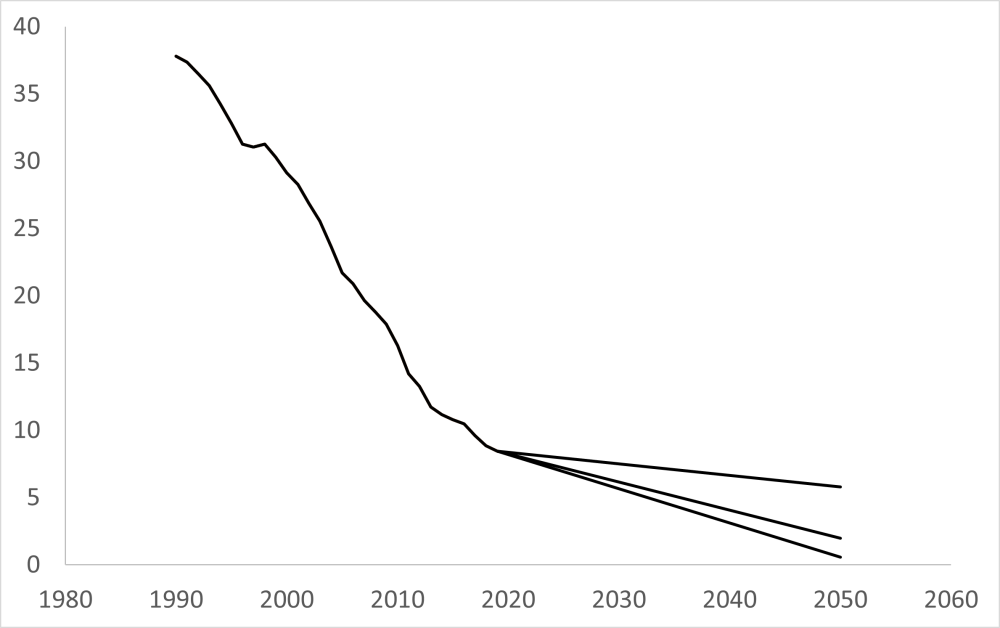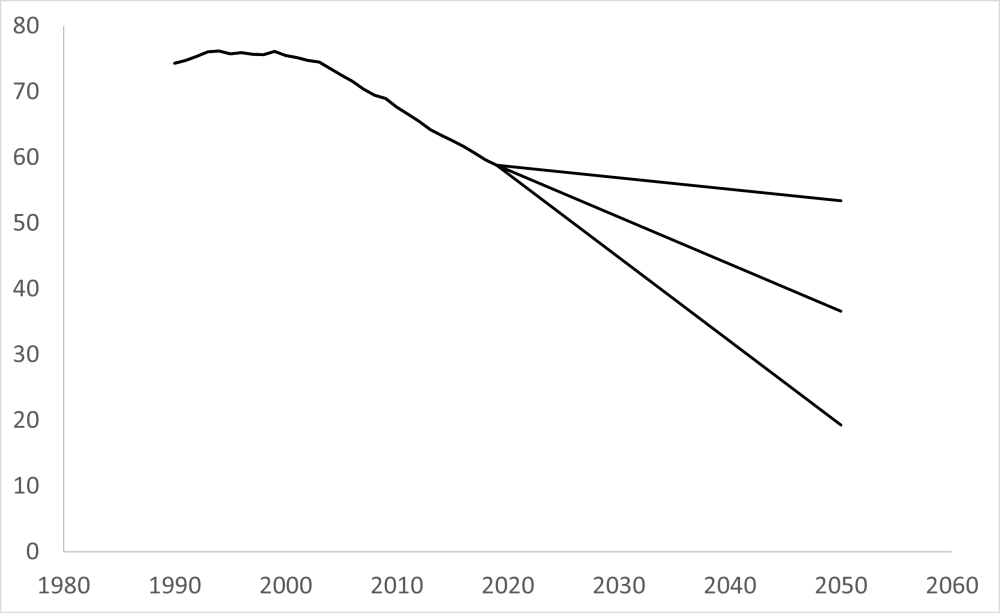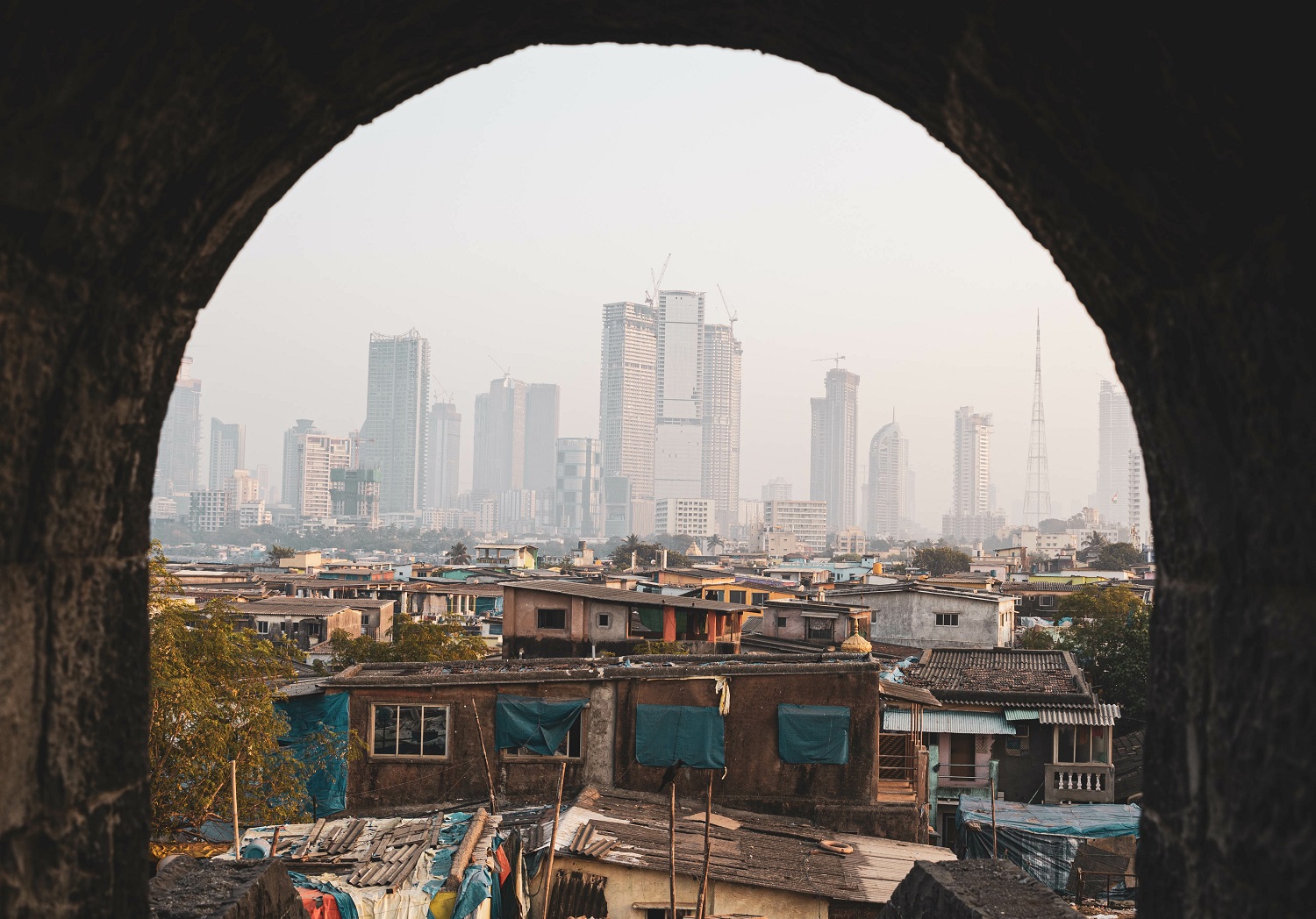The Sustainable Development Goals commit the world to ending extreme poverty by 2030. More cautiously, the World Bank’s twin goals suggest it can help reduce extreme poverty to 3 percent by 2030. Neither goal can be accomplished unless the extreme poverty line is (finally) fixed rather than constantly being updated. But even assuming the poverty line was fixed, World Bank experts themselves have long been pessimistic about reaching the poverty targets. Their best guess in 2020 was that around 7 percent of the world will still be in extreme poverty come 2030. Looking further ahead, they warned that, if poverty reduction trends remain unchanged, some countries will take decades to eliminate extreme poverty. Burundi might even take until 2210.
As part of an exercise creating scenarios for the global economy in 2050, Zack Gehan and I forecast a range of estimates for the state of global poverty in 2050. We use our own economic growth forecasts and the Stata functions embedded in the World Bank’s Poverty and Inequality Platform to predict 2050 poverty at two different lines, assuming within-country inequality remains the same over that time and consumption growth equals our predictions for GDP per capita growth.
The first figure below presents the range of forecasts for the extreme poverty line of $2.15 a day. Under the base forecast, the proportion in extreme poverty worldwide falls below 2 percent in 2050 and from 29 to 7 percent on the continent of Africa. Under the optimistic forecast for Africa (associated with a 3.5 percent GNI per capita growth rate between now and 2050), extreme poverty as currently measured falls below 2 percent in that region, too. Even the optimistic scenario points to slower progress than in the past two decades. That’s not because we are predicting very slow growth in countries home to the world’s poorest people. The rapid global progress of previous decades was driven by populous countries which began with average consumption close to the $2.15 line which grew fast. Poverty is increasingly an issue of the tail of the income distribution in smaller countries: that means it takes more growth more places to achieve the same percentage point decline in global poverty.
The second figure repeats the exercise for $10/day poverty. In 2019, about 57 percent of the world lived on less than $10/day (2017 $PPP). This included nearly nine out of ten people in the continent of Africa and India. In the positive growth scenario, this could drop as low as one in five of the World, one in five people in India and less than one half of Africa’s population. The central forecast suggests nearly two thirds of the world will live on more than $10 a day by 2050, along with nearly half of the Indian population and 30 percent of those in Africa.
In short, a dream of a world free of $2.15 poverty sadly appears likely three decades away rather than one, unless we rely on more than national income growth (GiveDirectly, anyone?). But if you are a believer in $10 a day making people ‘middle class,’ (I’m not, I admit), then the next couple of decades will finally make middle class average.
Global $2.15 Poverty to 2020

Global $10 Poverty to 2020

CGD blog posts reflect the views of the authors, drawing on prior research and experience in their areas of expertise.
CGD is a nonpartisan, independent organization and does not take institutional positions.










